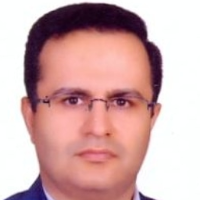Evaluating Groundwater Quality in Zayandehrood Southern Sub- Basin Aquifers
Supplying good water quality to meet the growing demands of different sectors is one of the main challenges faced by water planners and managers in Iran. The purpose of this study, therefore, was to investigate the trend of changes in groundwater quality in the long run and to calculate and map the quality index of water and nitrate in Zayandehrood sub-aquifers. To quickly assess water quality, a tool should be used to show the amount of water contamination in a short time. To this end, Water Quality Index (WQI) is used to quickly present the water quality assessment, expressing the water quality without mathematical and statistical complexity. The Iranian Water Quality Index (IRWQI) has been developed with the aim of using the appropriate approach to natural conditions and Iran's water resources issues.
some 2935 laboratory samples collected from wet and dry seasons were examined in terms of several water quality indices including EC, TDS, SAR, pH, TH, Cl, CO3, Ca, Mg, Na, K, HCO3, NO3, and heavy elements such as zinc, copper, lead, cadmium and arsenic. The trend of changes in qualitative parameters was evaluated, using MK and TFPW-MK methods whose results showed a decrease in water quality over time. Different interpolation methods were used to map zoning in ArcGIS software. The average IRWQIGC index was calculated in 7 aquifers of Zayandehrood sub-basin, and nitrate zonation and index were determined through kriging method.
The pH parameter displayed a significant negative trend at 1% level in Damanehdaran, Buin Miandasht, Lenjanat, Najafabad and Kron aquifers, at 10% in the forty house aquifer, and at 5% in the Chadegan aquifer. However, in contrast to the negative pH trend, the TDS, EC, and TH parameters showed a positive trendm being significant in the range of Damanehdaran, Buin Miandasht, Chadegan, Lenjanat, and Najafabad. While the anions and cations had no significant trend in the domains of the Damanehdaran, Buin Miandasht and Chadegan, they displayed significant negative trends in the Chehelkhaneh and Kron and a significant positive trend in the Lenjanat and Najafabad aquifers. The results of the study generally indicated a decline of water quality in Zayandehrood aquifer over time. The amount of heavy elements in the aquifer beneath the southern Zayandehrood Basin was reported as being within the permissible range. It should be noted that water is industrially corrosive and in some cases sedimentary. If considered in terms of overall hardness, water is often hard. In this regard, the findings of the study suggested that the highest average nitrate levels in Damanehdaran, Kron and Najafabad aquifers were 48.08, 50.42, and 63.13 mg / L, respectively, wheras the maximum nitrate content in these areas often exceeded the permitted range. Moreover, the lowest values of water quality index were found in Kron, Najafabad, and Lenjanat aquifers which could be classified in bad and relatively bad classes, respectively.
The trend analysis of Groundwater quality showed that water quality in the Zayandehrood sub-basin aquifers declined over time. The managers and planners are, thus, required to take some practical measures in reducing the contaminations exist in those areas. The lowest values of IRWQIGC index were found in Kron, Najafabad, and Lenjanat aquifers, leading to the lower quality of groundwater in these areas. Most of the average nitrate content was reported in the north and northwestern parts of Najafabad, followed by Kron aquifer and the central part of the slopes. Considering the fact that high nitrate rate in some cases mainly originates from the aquifer below the Southern Basin, it could be argued that the agricultural operations in the area would, due to the use of chemical pesticides and water pollution control activities in the area, be contaminated if measured in future. These areas are essential. The aquifers are located below the Zayandehrood Dam. Groundwater aquifers are seriously under pressure, especially on the downstream of the Zayandehrood Basin where water has been permanently off the middle of the river, and dredgers attempt to compensate for water scarcity by exploiting groundwater resources and drilling. As these wells have to compensate for the shortage of water in the region, the quantitative and qualitative decline of water and its pollution is more evident in these areas. A considerable number of researchers have also used the TFPW-MK test in their studies, and many of them have performed qualitative zoning in GIS and regarded kriging method as a suitable method for zoning mapping because the results of kriging are reliable in terms of spatial variance, location, location and sample distribution and then the other ones. Moreover, researchers have been interested in groundwater studies.
IRWQIGC , Kriging , Nitrate , TFPW-MK , Water Pollution
- حق عضویت دریافتی صرف حمایت از نشریات عضو و نگهداری، تکمیل و توسعه مگیران میشود.
- پرداخت حق اشتراک و دانلود مقالات اجازه بازنشر آن در سایر رسانههای چاپی و دیجیتال را به کاربر نمیدهد.



